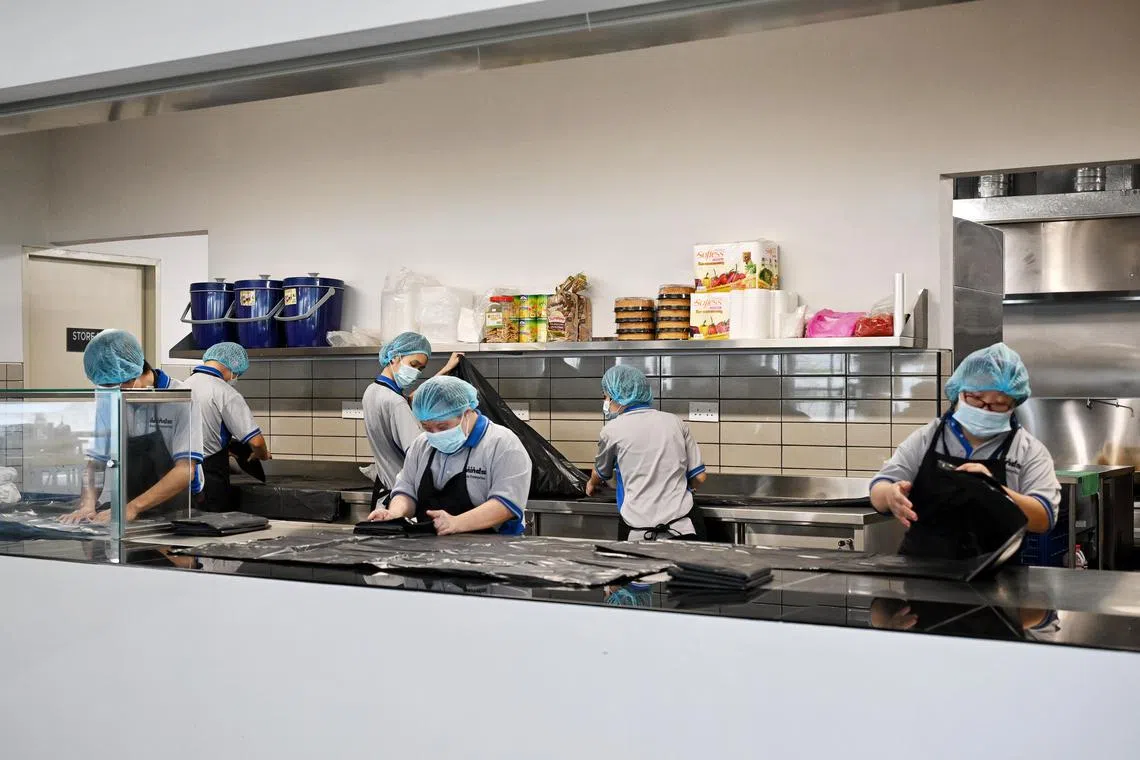More special education graduates progressing to work or further studies, earning higher incomes
Sign up now: Get ST's newsletters delivered to your inbox

The employment rate of people with disabilities grew from 28.2 per cent in 2019 to 32.7 per cent in 2023.
ST PHOTO: KUA CHEE SIONG
Follow topic:
SINGAPORE - More graduates from special education schools are progressing to work, training or further studies at institutes of higher learning.
They also earned higher incomes in 2023, compared with 2019, narrowing the income difference between them and the general workforce.
In 2023, 57 per cent of these graduates moved on to these pathways, up from 51.3 per cent in 2016, based on figures from the Education Ministry’s Graduate Employment Survey.
The remaining graduates went on to enrol in adult disability services, including sheltered workshops and day activity centres, or received care at home.
These findings were revealed in the first Disability Trends Report released by the Ministry of Social and Family Development on Dec 2.
The report provides an overview of key trends relating to people with disabilities (PWDs) and their caregivers in areas such as inclusive employment, quality of life, caregiving support and public attitude towards PWDs.
The employment rate of PWDs grew from 28.2 per cent in 2019 to 32.7 per cent in 2023, according to data from the Comprehensive Labour Force Survey by the Ministry of Manpower.
Around 45,000 PWDs aged 19 and above were known to the Government as at December 2023. This refers to PWDs who applied for government schemes or services.
The most common disability types were physical disability (34.4 per cent), followed by intellectual disability (19.2 per cent) and hearing loss (16 per cent), said the report.
Among PWDs who were employed, the majority were in full-time employment. The median income among PWDs has continued to grow over the years, rising from $2,630 in 2019 to $4,242 in 2023.
This is due to a higher proportion of tertiary-educated individuals (35 per cent to 46 per cent) and professionals, managers, executives and technicians (34 per cent to 45 per cent) among employed PWDs from 2019 to 2023, said the report.
But only one in five PWDs aged 18 to 64 took part in training programmes, compared with 43.5 per cent in the resident labour force.
The top two reasons PWDs gave for not attending training were their disability and health situation, which made it difficult for individuals to join such programmes. Some also felt challenged by the commute to unfamiliar locations.
Quality of life better for PWDs, but worse for caregivers
The report also covered findings from a study by the National Council of Social Service, which polls 2,000 PWDs known to the Government and their caregivers on various aspects of their lives every two years between 2022 and 2030.
The Disability and Inclusion Panel Study – conducted in 2022 and 2024 – found that the quality of life for PWDs has gone up slightly, as Singapore has made strides in disability inclusion, such as by making most public spaces and public transport accessible.
The overall quality of life scores for PWDs rose from 55 points in 2022 to 56.2 points in 2024. This is based on a scale ranging from 0 to 100, with 50 indicating neither poor nor good quality.
Quality of life is measured through the World Health Organisation’s Quality of Life Brief Version framework, which assesses an individual’s well-being across physical health, psychological well-being, social relationships and environment.
For instance, the survey asks respondents if they feel the local area they live in is healthy, if they get the chance to do leisure activities, and if they feel their lives have meaning.
PWDs experienced improvement particularly in the social relationships and psychological domains, with the report citing initiatives to increase access to arts, heritage, sports and community activities.
But caregivers experienced a dip in quality of life – their scores fell slightly from 64.7 points in 2022 to 62.1 points in 2024.
Financial assistance and subsidies were the top service that caregivers required but have not been able to access, cited by 37 per cent of those polled.
The median age of caregivers of PWDs was 57, with one in four of them aged 65 and above. Females made up more than two-thirds of caregivers.
Madam Lim See Wat, 65, is the sole caregiver for her 24-year-old son, who has intellectual disability.
After graduating from special education school Towner Gardens School at 18, he spent most of his time at home, until an Enabling Services Hub (ESH) was launched at Tampines West Community Club (CC) in August 2023. These hubs run community activities for people with disabilities, and offer caregivers training and respite care.
Madam Lim, a housewife, takes her son for bowling, swimming, badminton, cooking and karaoke activities at the CC, as well as outings to parks and museums with volunteers from ESH@Tampines.
It can take her more than 20 minutes to persuade him to enter the pool, and up to two hours to get him to take a shower.
“I’m very tired, but I have no choice. I don’t want him to just stay at home and have no friends. At least when he’s at the CC, he’s happy and smiling,” she said in Mandarin.

